  An electrician installs fiber optic cables inside an electrical powerhouse for the Effluent Management Facility at the Hanford Site’s Waste Treatment and Immobilization Plant.
WASHINGTON, D.C. – Electricians, radiological technicians and project control analysts are projected to be among the most in-demand professions across the EM complex in coming years, according to a recently completed analysis.
In conjunction with the Energy Facility Contractors Group (EFCOG), which represents contractors at DOE sites, EM recently completed a set of projections looking at workforce needs at cleanup sites over the next five years. With EM’s cleanup mission set to last for decades, one of EM’s pressing challenges is ensuring the next generation of workers is ready and available.
“Developing, recruiting and retaining the next-generation workforce EM will need across the country will be critical to ensuring our continued progress,” EM Senior Advisor William “Ike” White said.
Over the next five years, according to the analysis, EM sites will need approximately:
- 11,000 operators
- 8,700 radiological technicians
- 6,500 electricians
- 5,500 project controls analysts
- 3,500 project managers
- 3,500 mechanics and
- 2,300 work planners.
Going forward, EM will use the analysis to help shape potential new workforce development efforts and refine existing programs. EM contractors have programs to help recruit and train workers in a variety of necessary fields. For example, EM Los Alamos Field Office cleanup contractor Newport News Nuclear BWXT-Los Alamos has established “boot camp” programs with the University of New Mexico-Los Alamos for radiological control technicians and waste processing operators.
“With greater knowledge of the jobs and skills EM will need over the next five years, we can ensure that workforce development programs across the DOE complex are having the most impact and generating the best returns,” said Kristen Ellis, acting EM associate principal deputy assistant secretary for regulatory and policy affairs.
The analysis can also assist EM in working with local communities near cleanup sites to meet workforce needs, ranging from development programs at local educational institutions to ensuring communities have the necessary infrastructure to support increased employment. In August, EM and EFCOG, working with the Energy Communities Alliance (ECA), will have meetings with local officials near Los Alamos, New Mexico, on workforce needs there. The meeting is intended to serve as a pilot that EM could replicate with local officials near other cleanup sites.
“This is great information as it provides the municipalities, economic development entities and local educational intuitions with information to shape new workforce development efforts and refine existing programs,” ECA Executive Director Seth Kirshenberg said.
-Contributor: Michael Nartker
 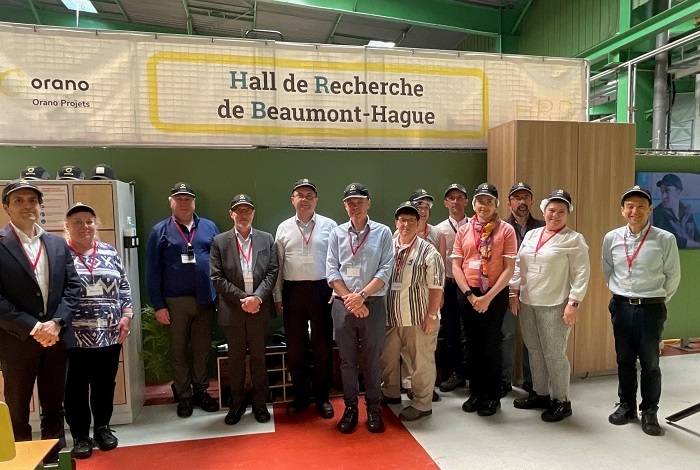 An EM team led by Senior Advisor William “Ike” White is pictured at the Research Hall of Beaumont-Hague.
An EM team led by Senior Advisor William “Ike” White recently traveled to France to visit the nuclear company Orano and Alternative Atomic Energies Commission (CEA) facilities, and meet with representatives with the French National Radioactive Waste Management Agency (ANDRA).
The trip provided an opportunity for the EM leaders to learn about how France disposes of nuclear waste and assess how the country’s lessons learned can apply to EM’s cleanup mission.
“I believe we can work together to achieve safe, cost-effective and accelerated cleanup in our programs through information exchange and sharing of best practices,” White said of EM’s collaborative relationship with France, while speaking with ANDRA executives. “It would only benefit both of our countries.”
The EM team members traveled to Normandy, where they visited Orano’s Research Hall of Beaumont-Hague, Temis, and the company’s large reprocessing plant in La Hague. The Hague treatment site is now the world leader in the field of reprocessing used fuel and serves as a technological model for many countries, as well as a source of constant innovation.
In addition, the team visited CEA’s Marcoule site in the south of France to see CEA’s vitrification pilot facility, and met with the CEO of Orano, Philippe Knoche. This visit was of importance to EM, allowing the cleanup program leaders to evaluate vitrification capabilities to assess potential applicability for treatment of calcined high-level waste and possibly sodium-bearing waste at EM sites, including the Idaho Cleanup Project.
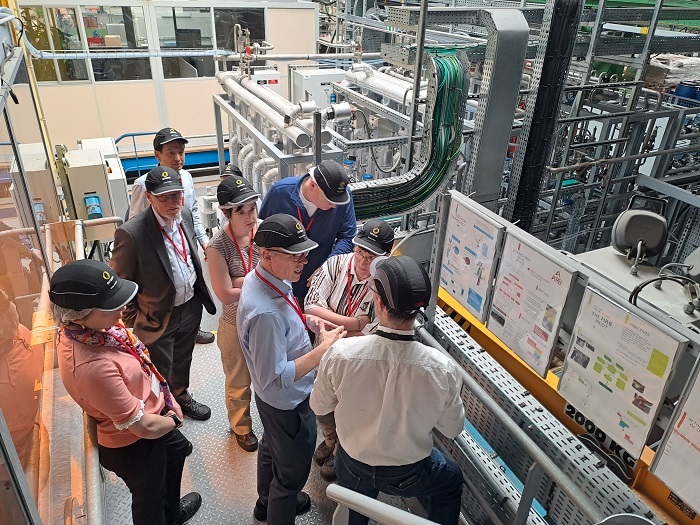 EM Senior Advisor William “Ike” White is pictured at center discussing the Cold Crucible Melter in operation at the Research Hall of Beaumont-Hague.
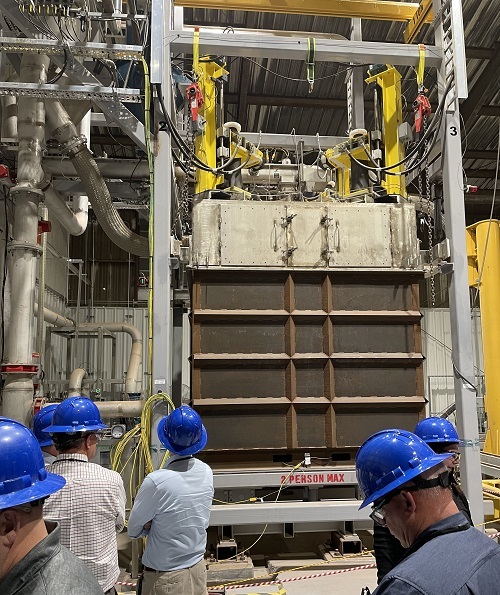 |
|
EM Senior Advisor William “Ike” White tours the Veolia GeoMelt facility located at Waste Control Specialists in Andrews, Texas. |
Exploring vitrification possibilities for legacy waste was also a focus of another recent EM trip when White and other EM subject-matter experts traveled to Veolia’s GeoMelt Nuclear Waste Vitrification Facility in Texas.
The EM officials visiting France said the country has made many positive contributions in the radioactive waste management field. These accomplishments have been of keen interest to EM, including the deactivation and decontamination of legacy nuclear sites; decommissioning and dismantling of facilities; remediation, including groundwater and soil; long-term waste management solutions; workforce development; and stakeholder engagement.
EM upholds a memorandum of understanding with ANDRA that provides a framework for cooperation between the United States and France in radioactive waste management, including repository disposal technologies, geologic and engineering studies, decommissioning approaches, groundwater and soil remediation, and interim storage of spent fuel.
A joint statement among the United Kingdom, France, Canada and the U.S declares the parties’ commitment to continue building their longstanding collaboration of cleanup of legacy nuclear sites. The statement was issued during the Waste Management Symposia in Phoenix, Arizona earlier this year.
“Our partnerships around the globe help shape best practices and solve remaining challenges to environmental cleanup,” White said. “When it comes to building a world that is safer, cleaner and healthier, we are all truly in this together.”

DOE recently honored two EM employees with major awards for their superior performance in 2022.
Thomas Temple, a lead facility engineer with the Savanah River Site (SRS) in Aiken, South Carolina, received the Safety System Oversight Award, and Robert J. Geray, a facility representative with the Idaho Nuclear Technology and Engineering Center at the Idaho National Laboratory Site in Idaho Falls, won the Facility Representative of the Year Award.
“Mr. Temple is the consummate professional and a tremendous resource for not only the Savannah River Operations Office, but also the entire EM complex,” DOE-Savannah River Manager Mike Budney said. “He has provided invaluable service, advice and recommendations to me and my management team; has served as a coach and mentor to his fellow staff members; and partnered with the contractors in a way to leverage the most out of available resources to best serve the EM mission. We are extremely proud of all Tom has accomplished.”
With 33 years of engineering and operations subject matter knowledge, Temple has a willingness to expand his contributions beyond his daily roles, serving as nuclear safety specialist and in safety system oversight as well as many other assignments, directly contributing to critical SRS and broader DOE missions, according to award nomination documents.
Temple had a significant impact on the operations of two major liquid waste contactors at SRS. He also provided meaningful nuclear safety expertise for all DOE SRS facilities and served as a nuclear safety subject matter expert for DOE’s Savannah River Operations Office.
Temple also demonstrated his dedication and technical knowledge in 2022 to positively impact the safety and efficiency of various SRS facilities supporting the EM mission. He made immediate impacts in identifying areas for improvements to safety basis development, management and implementation across SRS. His efforts were key in identifying enhancements to accelerate closure of high-level waste tanks.
 |
|
Thomas Temple, a lead facility engineer with the Savanah River Site |
Robert J. Geray, a facility representative with the Idaho Nuclear Technology and Engineering Center at the Idaho National Laboratory Site |
|
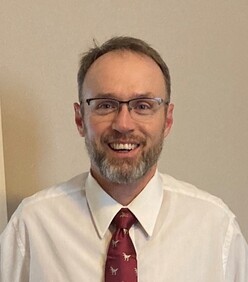 |
Geray showed exceptional performance as a facility representative with his technical knowledge of the conduct of operations, radiation protection, maintenance, technical training, and regulations and requirements, combined with his ability to analyze contractor performance.
“Mr. Geray demonstrated superior performance of his responsibilities as a DOE facility representative throughout 2022 in a manner that greatly supports the environmental management cleanup mission at the Idaho National Laboratory Site,” said Jonnie Zobell, assistant manager for operational oversight of the Idaho Cleanup Project. “His exceptional technical knowledge combined with his exceptional ability to analyze contractor performance and metrics significantly contributes to the overall success of the Idaho Cleanup Project mission.”
Geray is qualified for decontamination and decommissioning activities for EM nuclear facilities and was recognized for his exceptional teamwork and improving employee safety, according to the award nomination documents.
In addition to his regular duties, Geray led multiple tours for stakeholders of the Integrated Waste Treatment Unit and other facilities in support of DOE headquarters, DOE-Idaho staff and the Defense Nuclear Facilities Safety Board.
-Contributor: Melissa Hanna
 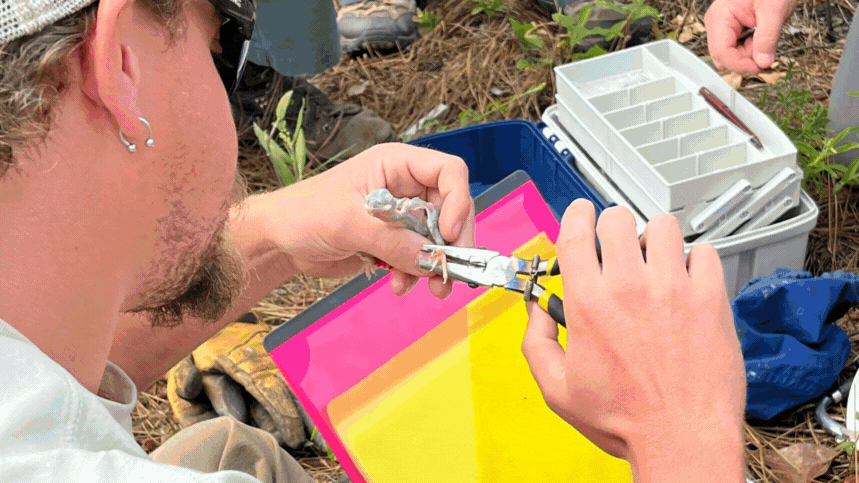 DOE-Savannah River Manager Mike Budney recently joined U.S. Forest Service-Savannah River personnel Ray Geroso, Thomas (Tal) Mims and Knox Goosetree to observe the endangered red-cockaded woodpecker monitoring process. The group visited a cluster for these birds where they weighed and banded two nestlings for future observation. (Photo credit: Matt Baker)
AIKEN, S.C. – An EM site manager recently joined U.S. Forest Service personnel to observe the monitoring process for the endangered red-cockaded woodpecker at the Savannah River Site (SRS).
The bird’s population has grown considerably at the site since three were identified there as part of a survey conducted in 1985.
“The banding operation carried out by the U.S. Forest Service-Savannah River (USFS-SR) really is emblematic of what our mission at Environmental Management is all about: restoring our sites in a way in which they can serve new purposes, or, in this case, their original purpose, by creating a viable home for species challenged by development,” DOE-Savannah River (DOE-SR) Manager Mike Budney said. “Plus, getting a chance to hold a baby bird that hasn’t even opened its eyes is a pretty cool way to spend the day.”
In 1986, a collaborative effort between the USFS-SR and DOE-SR to help reestablish the federally protected woodpecker led to the development of a red-cockaded woodpecker recovery management plan. Under that plan, more than 65,000 acres of land at SRS is set aside as habitat for the species.
To overcome the lack of suitable trees with cavities, or holes, for nesting on SRS, artificial cavity inserts developed by the U.S. Forest Service are installed in living pine trees to supplement the bird's effort to construct natural cavities.
Groups of tree cavities close to one another are called clusters. When a cluster houses a breeding male and female, it’s called a potential breeding group. These groups often contain juvenile males that share responsibility for caring and feeding young nestlings.
When red-cockaded woodpecker nestlings are about seven to 10 days old, they are extracted from a cavity to be banded. Five bands are placed on the legs of each nestling. Four colored bands and one aluminum U.S. Fish and Wildlife band are uniquely arranged to identify each individual bird.
Banding is an important management tool that allows wildlife biologists to accurately track the range of the woodpecker across SRS. This information can be used to help develop future land management and habitat improvement actions such as prescribed fire and timber operations in that specific area.
Forest Service habitat management actions to support the red-cockaded woodpecker population include forest thinning, removing midstory hardwoods within a 50-foot radius of cavity trees, the application of prescribed fire once every three to four years and selecting replacement and recruitment stands for all active clusters based on red-cockaded woodpecker population expansion goals.
These habitat management actions have been instrumental to the success of the red-cockaded woodpecker population at SRS. In addition, successful translocation has helped the genetic diversity while also increasing the overall population of this species at SRS. The site currently hosts approximately 145 potential breeding groups with 617 individuals.
 
Click here for the preliminary agenda for the ninth-annual National Cleanup Workshop set for Sept. 11-13 at the Crystal Gateway Marriott in Arlington, Virginia. The agenda features a lineup of senior EM leadership, along with members of Congress, state and local government officials and industry leaders from sites across the DOE complex. Key speakers include EM Senior Advisor William "Ike" White, EM Principal Deputy Assistant Secretary Jeff Avery and Rebecca Casper, mayor of Idaho Falls, Idaho. Check out this EM webpage to find coverage of past workshops, including a video of White’s 2022 workshop keynote address. The site features EM Update newsletter reporting and a gallery of photos showcasing everything from the reception kicking off the event to a variety of speakers and panels. Last year, about 630 in-person and 91 virtual attended the workshop, billed as the premier annual gathering to discuss progress in environmental cleanup of former government weapons sites and nuclear research facilities. Energy Communities Alliance, with the cooperation of EM and the Energy Facility Contractors Group, host the workshop. Registration is open for this year's workshop.
 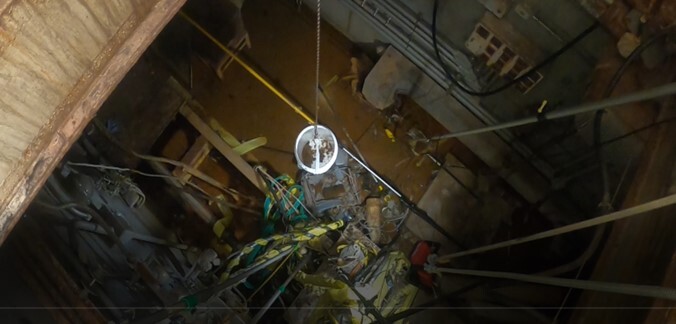 Oak Ridge workers met the challenge of finding and removing a highly radiated item 3 to 4 inches in length from a debris-scattered floor of a former hot cell structure. They searched for the item from a location 25 feet above the floor.
OAK RIDGE, Tenn. – EM workers recently completed a big task involving a small item by safely removing a highly radiated segment of wire roughly the size of a straightened-out paper clip from a cleanup project at the Oak Ridge National Laboratory.
The wire — only 3 to 4 inches in length — presented major challenges as crews cleaned out the East Cell Bank to get it ready for demolition next year. The hot cell structure is the last remaining component of the former Radioisotope Development Laboratory, also known as Building 3026.
Crews with the Oak Ridge Office of Environmental Management (OREM) previously demolished the outer structure of the East Cell Bank and five other hot cells in the former laboratory over the past 13 years.
The cells were heavily shielded concrete rooms that provided researchers protection from radioactive material as they conducted research. The laboratory was built in 1945 to support isotope separation and packaging and was later used to examine irradiated reactor fuel experiments and components.
In the recent project at the East Cell Bank, the first challenge entailed locating and identifying the exact source of the elevated radioactive readings. Workers were operating through an opening atop the hot cell structure, approximately 25 feet from the floor where debris was located.
With other debris scattered in the room, searching for the segment of wire was like trying to find a needle in a haystack.
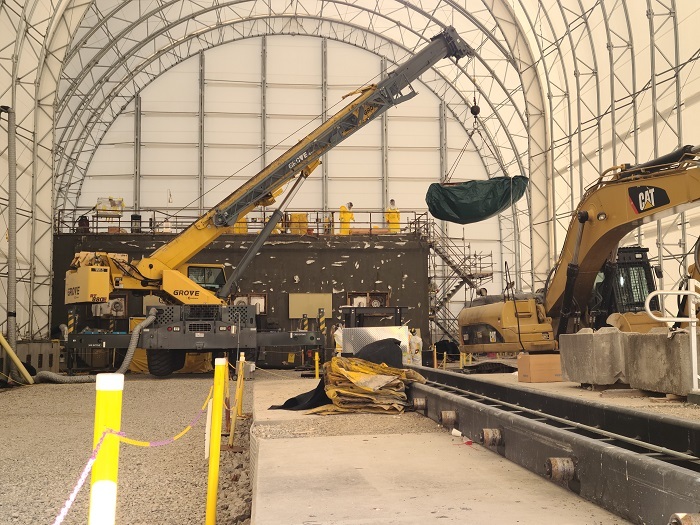 Oak Ridge crews lift and remove heavy shielded plugs from the roof of a hot cell structure at the former Radioisotope Development Laboratory. They identified and packaged a tiny radiated item on the floor there through the opening atop the structure.
Once the wire was located, the next challenge was retrieving it.
The project team considered multiple options for safely packaging the radiological source to protect personnel during waste packaging, transportation and disposal. OREM cleanup contractor UCOR safely removed the component using a long-reach tool and placed it in a concrete-shielded 85-gallon drum. The drum was filled with cement and placed in a specialized container to be shipped for disposal.
Those tasks were performed in the concrete-shielded East Cell Bank, which is under a six-story protective cover that provides added safety measures.
“UCOR’s top priorities are the health and safety of its workers and ensuring that we are reducing risks at our worksites,” said Dan Macias, UCOR site integration and cleanup manager. “We are continually working to find safe, effective methods to reduce environmental risks to our workers and the community. The safe removal of this component underscores our commitment.”
The tiny packaged component is slated for shipment to an offsite disposal facility in coming weeks.
UCOR crews will continue removing additional waste from the East Cell Bank as they prepare it for demolition, which is scheduled for 2024.
-Contributor: Carol Hendrycks
  Savannah River Nuclear Solutions (SRNS) President and CEO Stuart MacVean talks with incoming interns during an internship program meet-and-greet that connected 180 participants in the program with SRNS senior executives and managers.
AIKEN, S.C. – A total of 180 students hailing from 59 colleges and 15 states recently earned spots in an EM contractor’s paid summer internship program at the Savannah River Site.
The interns will engage with a variety of disciplines within Savannah River Nuclear Solutions (SRNS), including engineering, computer science, physical sciences, business services, communications, information technology and more.
Visit DOE's STEM Announcements page for more STEM news.
“With over 2,000 applicants, it was an extremely competitive process to be accepted into this program,” said Bryan Ortner, manager, SRNS Talent Acquisition and Analytics. “We are excited to see our local pipelines paying off as well as a 30% increase in the number of historically black colleges and universities represented in this class.”
The SRNS Internship Program creates the opportunity for students to gain hands-on learning experiences related to their field of study while earning a competitive hourly pay and the ability to network with SRNS professionals and industry leaders.
“This is a chance of a lifetime for any young professional,” said Sean Alford, SRNS executive vice president and chief administrative officer. “I expect our interns to engage and interact with senior executives, managers and other students to leverage this opportunity to advance in their careers.”
 Student interns learn what it takes to have a successful internship experience at Savannah River Nuclear Solutions (SRNS) from Sean Alford, SRNS executive vice president and chief administrative officer, during the internship program’s meet-and-greet.
An out-of-state sophomore was impressed by the number of opportunities available at SRNS.
“My home state lacks professional experiences in the nuclear industry,” said Spencer Bailey, who attends Brigham Young University in Provo, Utah. “I’ve spent the last three weeks exploring theories and concepts of nuclear engineering, integrating myself with the team and learning how SRNS makes the world safer.”
The goal of the internship program is to bridge the gap between academic study and its application in professional practice. Participating students get a glimpse into the SRNS work environment, which could translate into a full-time position at the site.
“SRNS has grown by 20% in the last three years, in part due to internship programs that allow personnel the chance to spark relationships with potential new hires,” said Ortner. “We will continue to grow this program and provide a valuable experience that brings students back to the site.”
Click here for more information about SRNS internship opportunities.
-Contributor: Mackenzie McNabb
 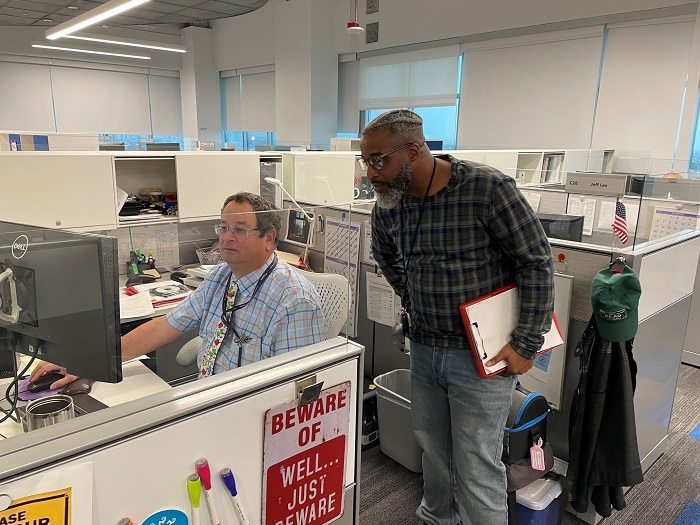 Environmental Scientist II Juan Alvarado, left, and Real-time Radiography Technician Byron Smith are pictured at work at the Molasky Center in Las Vegas.
LAS VEGAS – Byron Smith joined the EM Nevada Program in spring 2022 to work as a real-time radiography technician. The former X-ray technician started the job with more than a decade of experience in radiology.
But over the past year, he has been eager to expand his role within EM Nevada’s Radioactive Waste Acceptance Program (RWAP) and help other teams within EM Nevada.
“The opportunity to do more work is a reward for what has been accomplished,” Smith said. “Being able to work outside of my scope means the world to me; it’s why I come to work every day.”
The job of a real-time radiography technician requires Smith to monitor selected waste containers before they are disposed of at the Nevada National Security Sites (NNSS) location some 65 miles northwest of Las Vegas.
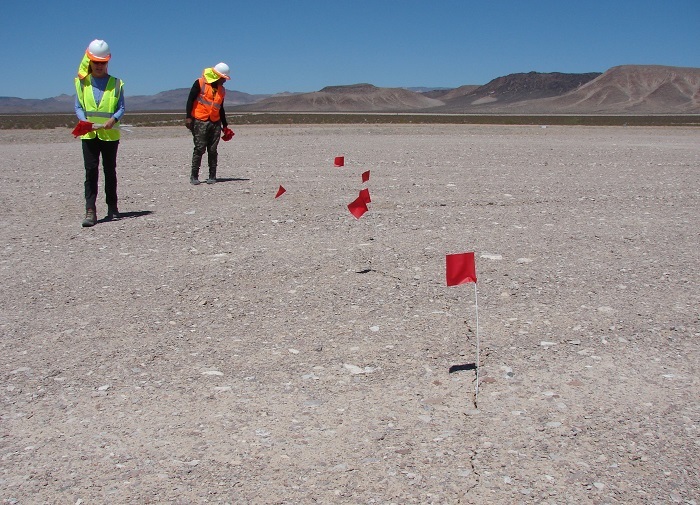 EM Nevada Program Real-time Radiography Technician Byron Smith, right, marks a subsidence crack with flags at the Nevada National Security Sites. Subsidence cracks can form in the earth’s surface over time.
EM Nevada is responsible for the safe disposal of those classified, low-level and mixed low-level waste shipments received at the NNSS from RWAP-approved generators across the U.S., primarily in support of EM and National Nuclear Security Administration (NNSA) missions. The waste is then placed in what are known as waste cells, which collectively make up the Radioactive Waste Management Complex, a highly engineered land disposal unit.
When waste containers are selected for real-time-radiography, Smith travels to the NNSS and works with Mission Support and Test Services, the NNSS management and operations contractor, in conducting and analyzing real-time radiography imaging, which amounts to a live X-ray feed of the contents of a container. Smith’s job is to ensure the reviewed waste is consistent while looking for prohibited items like liquids, batteries or electronics.
Environmental Scientist II Juan Alvarado, meanwhile, is responsible for making sure the waste cells are secure and compliant with regulations defined in the Federal Facilities Agreement and Consent Order and NNSA Resource Conservation and Recovery Act permit. When Alvarado needed an extra pair of eyes for what are known as “walk-downs” at the waste cells, he knew who to ask.
“Byron showed a lot of initiative,” Alvarado said. “He’s inquisitive and willing to step up.”
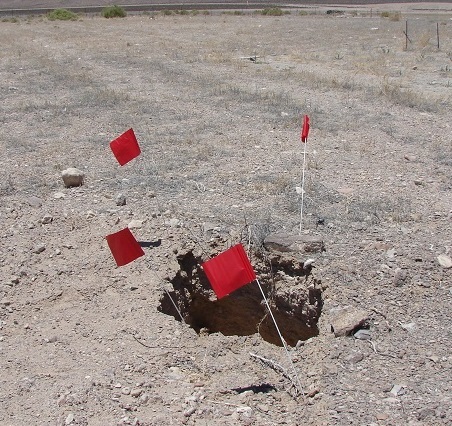
A look at a subsidence hole — a little dip in the earth’s surface that forms over time — marked with flags.
|
Walk-downs are visual inspections of the closed waste cells at the site. Only the soil cap, or soil cover, over each waste cell is exposed and each cap has a minimum thickness of 8 feet.
On their walk-downs, EM Nevada team members inspected each cap to ensure compliance with regulatory commitments. They observed signage to see if it’s present and legible and confirmed appropriate fencing and security measures. They also traversed the surrounding land, noting the visibility of land survey markers and monuments designed to mark the perimeter. In particular, they looked for subsidence holes — little dips, depressions or cracks in the earth’s surface that can form over time. Team members marked any flaws with flags and noted their locations so personnel could make repairs.
In addition to on-the-ground experience with Alvarado, Smith completed internal training specific to the work at the waste cells. He saw the walk-downs as an excellent opportunity to experience a wider scope of the waste disposal process and learn more about the overall EM mission at the NNSS.
“I was excited because I knew I was going to be able to see the whole site,” Smith said. “The first time we went out to Area 5 to walk the cells and look for subsidence cracks or depressions, it put me in a position to see and understand where the waste (from real-time radiography scans) is going. I got to see the work and gain exposure to more of the process.”
He added: “The readings don’t fully translate until you’re out in the field. It made my understanding of the work a lot stronger.”
 A look at flags being placed as part of the walk-down process. EM Nevada Program team members perform this visual inspection to ensure compliance with regulatory commitments.
Alvarado noted multiple benefits from Smith’s versatility, including saving costs for EM Nevada due to personnel filling multiple roles.
“In everything we do, it is a huge advantage when your employee base can move from one task to another,” Alvarado said.
RWAP Manager Marilew Bartling agreed, noting it facilitated teamwork, offered EM Nevada a fresh set of eyes, maximized resources and expanded Smith’s knowledge as an employee. She was not surprised to see Smith excel with the added responsibility.
“He’s got such a gregarious personality and he’s learned so much so quickly,” Bartling said. “He is exceptional in how fast he has integrated with the team.”
Alvarado and Smith have gone on numerous walk-downs since their first trip to Area 5. They will continue to perform inspections together in the months ahead.
Click here to read more about the waste acceptance program at the NNSS.
-Contributor: Grant Johnson
 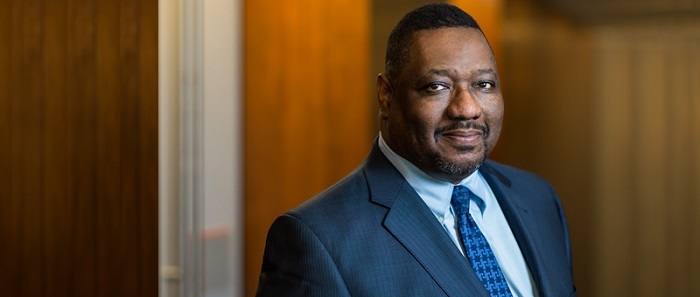 Bechtel National Inc. has named Brian Hartman as the new project director for the Waste Treatment and Immobilization Plant on the Hanford Site.
RICHLAND, Wash. – Bechtel National Inc. has selected Senior Vice President Brian Hartman as the new project director for the Waste Treatment and Immobilization Plant (WTP) at the Hanford Site. He is a 40-year Bechtel veteran with extensive leadership experience.
“Brian is a proven leader with a talent for building strong partnerships and creating high-performance teams,” said Tom Fletcher, EM Office of River Protection assistant manager and federal project director for WTP. “His deep experience on complex projects and across all aspects of project management and implementation makes him an ideal choice. I’m excited to work together as he leads the WTP project forward.”
Hartman will lead the WTP project through final commissioning of the Low-Activity Waste Facility and its support facilities, which will immobilize low-activity waste in glass for disposal at the Integrated Disposal Facility on the site. He will also oversee the team working the engineering, design and procurement for a facility to treat high-level waste.
“I look forward to building on the WTP team’s quality culture and collaborative approach to how we do work,” said Hartman. “We have an important mission to protect the environment and the public. I’m eager to work with our customer, other Hanford contractors, regulators and the local community.”
Hartman most recently served as Bechtel’s corporate manager of engineering and technology and as project execution manager. In this role, he headed the global engineering and technology functions for 5,000 professionals in 115 locations across 20 countries. Over the past year, he also managed collaborative engineering efforts among Bechtel, NASA and subcontractors to design a new launch facility at the Kennedy Space Center located on Merritt Island, Florida.
Hartman was elected a principal vice president in 2013 and senior vice president in 2020. He holds a bachelor’s degree in electrical engineering from the University of Tennessee, Knoxville. He is a certified professional engineer and a member of the International Association of Automation and National Society of Black Engineers.
Hartman succeeds Valerie McCain, who passed away earlier this year.
-Contributor: Tyler Oates
 
PADUCAH, Ky. – EM has appointed six new members to the Paducah Gaseous Diffusion Plant Citizens Advisory Board (CAB):
-
Cheryl “Gaye” Brewer is a retired state regulator with the Kentucky Department for Environmental Protection.
-
Gaylon Grubbs is a retired studio operator and cameraman with the WPSD television station in Paducah.
-
Reese Henderson is a University of Kentucky College of Engineering Paducah campus student.
-
Rodney Hill is the pastor at Fairview Baptist Church in LaCenter, Kentucky.
-
Andrew Paul is a student at West Kentucky Community & Technical College and University of Kentucky College of Engineering Paducah campus.
-
Benjamin Stinnett oversees recruitment, scholarships and career services for the University of Kentucky Paducah campus.
Eight reappointed members will continue their service for the next two years:
-
Don Barger is a retired educator from Mason Public Schools in Mason, Michigan.
-
Eric Butterbaugh is a franchise owner of Stanley Steamer in Paducah.
-
Hannah Chretien is an economic developer and chamber of commerce director in Ballard County, Kentucky.
-
William Robert Clark is an operator with EM Paducah Site cleanup contractor Four Rivers Nuclear Partnership and a United Steelworkers union member.
-
Clinton Combs is an insurance agent with Peel & Holland Insurance in Benton, Kentucky.
-
Myron Wessel is a senior process engineer at the Honeywell facility in Metropolis, Illinois.
-
Riley B. Willett is the public health director at the Graves County Health Department in Mayfield, Kentucky.
-
Elizabeth M. Wilson is a loan servicing relief specialist with Paducah Bank in Paducah.
The CAB is a federally chartered board that provides advice to DOE concerning environmental remediation and future use of the Paducah Site.
The board is comprised of up to 15 individuals from McCracken, Graves, Ballard and Marshall counties in Kentucky and Massac County in Illinois. Volunteer members can serve up to three consecutive two-year terms.
Members represent a diverse group of interests within the community such as business, academia, labor, local government, the environment as well as the general public. Additionally, the board has liaisons from the U.S. Environmental Protection Agency and the Commonwealth of Kentucky.
The CAB meets the third Thursday of most months at 5:30 p.m. for presentations and discussions regarding environmental management activities at the Paducah Site as well as issues pertaining to future use of the site. Additionally, the CAB meets to consider recommendations and conduct any pertinent business. Public comment may be made during formal board meetings.
Click here for information on the CAB, including meeting times and location, or contact Buz Smith at (270) 441-6821.
  EM Richland Operations Office contractor Hanford Mission Integration Solutions has established a partnership with local law enforcement to encourage traffic safety. Hanford Patrol Deputy Chief Jason Gessner, left, and Benton County Sheriff’s Deputy Grant Larson are part of the effort to ensure safety on the Hanford Site.
RICHLAND, Wash. – The Hanford Site and EM Richland Operations Office contractor Hanford Mission Integration Solutions (HMIS) teamed up with the Benton County Sheriff's Office earlier this year to enhance traffic safety on the site.
Over the last few months, the partnership has resulted in improvements in traffic safety and positioned Hanford Patrol, the sheriff’s office and the HMIS Traffic Safety team to work together to reduce traffic-related violations.
 Benton County Sheriff’s Deputy Grant Larson has been with the Benton County Sheriff’s Office since 2004 and patrols the Hanford Site as part of his duties.
Benton County Sheriff’s Deputy Grant Larson is one of two deputies who work with Hanford Patrol and Deputy Chief Jason Gessner to patrol the site. Larson is highly trained in traffic enforcement and has already made substantial contributions, including identifying and addressing traffic safety concerns and working closely with Hanford’s Traffic Safety committee to develop educational programs intended to promote safe driving habits.
"Ensuring safety is our top priority, especially with thousands of workers commuting to the site every day,” said Brian Vance, manager of EM’s Office of River Protection and Richland Operations Office. "The Benton County Sheriff's Office has been a valuable partner, and the presence of deputies on the roads reinforces the importance we place on safe driving behaviors at Hanford."
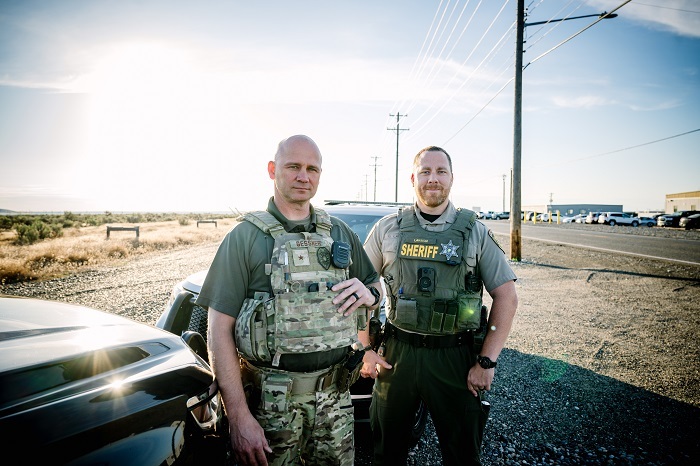 Working together to keep Hanford Site roads safe, Hanford Patrol Deputy Chief Jason Gessner, left, and Benton County Sheriff’s Deputy Grant Larson are committed to promoting traffic safety as part of a partnership established by EM Richland Operations Office contractor Hanford Mission Integration Solutions.
The partnership is helping commuters not just at Hanford, but throughout the community, as the team encourages employees to take safety practices home with them. The collaborative team holds monthly meetings to work on safety initiatives and improve programs to reduce incidents of speeding and distracted driving.
"The presence of these deputies ensures traffic safety is taken seriously at Hanford and highlights the mutually beneficial relationship between our teams,” said Hanford Patrol Chief Lorin Cyr. “The deputies patrol roads inside and outside the security barricades, reinforcing the safety of our workforce.”
The Hanford Traffic Safety committee also recently partnered with the Washington State Patrol on the Washington State Department of Transportation’s Target Zero Program, for a successful speed enforcement operation on the site.
-Contributor: Cerise Peck
|